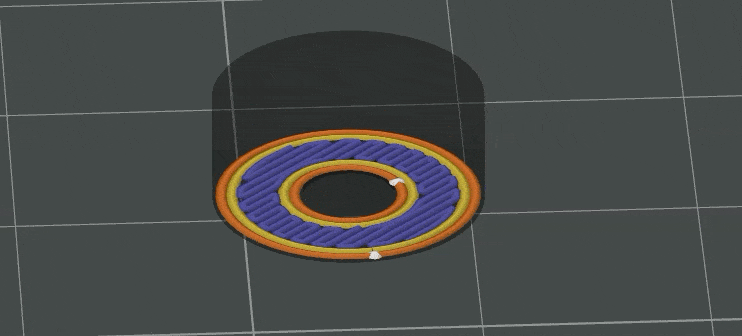My favorite reason to have a 3D printer in the house is to solve tiny problems

Abby bought some new knobs for an old dresser that came with screws that were just a little too long. I looked to see if I had screws with the correct threading that were shorter, but I couldn't find any that were a good fit, and I needed 9 of them in total. This isn't really a mind-bending design or 3D printing problem to solve, but it was cool to see how fast and easy something like this is to solve with a 3D printer and a tiny amount of 3D modelling.
Instead of heading to the hardware store, I was able to design and print spacers, all in a bit less than an hour!
I designed the spacer in OnShape. I have very little experience with 3D modeling at this point, but I find OnShape to be relatively easy to use compared to the other free options out there, plus it's great that it runs in your browser. It's maybe not quite as easy to pick up as TinkerCad, but if you watch a video or two, it's not so bad.
First, I measured things and figured I only needed a few millimeters of extra space for the screw to work. My basic thought was a cylinder with a hole in it wide enough for the screw to pass through should work, but to get slightly fancy I also made a spot for the screw head to sit flush in.
Step 1 was to create the sketch of a 12 mm circle with another 4 mm circle on the inside. Then I used the extrude tool to make that sketch a 5 mm tall cylinder. Then I used the chamfer tool to make a chamfer of 2 mm (the approximate height of the head of the screw). I just kind of guessed on the angle of the chamfer, as none of this really needed to be exact.



Then I printed one off as a test and it worked great! So I printed 8 more. I was getting to the end of this particular roll of black filament, so I set the printer to print each part one at a time in case I ran out. That way, I'd end up with 6-7 completed spacers instead of 8 incomplete ones.
They did the job perfectly. Admittedly, the chamfer turned out to be a bit silly, as I am using PLA for these prints. PLA is a soft enough plastic that the screws sunk in a bit if I tightened them hard enough, but hey, at least I learned a bit more about 3D modeling, and it still does the job!




The end-result! (featuring a cameo from the pretty ugly pink knobs that were there before)
Comments